Using Faux Leather in Home Decoration
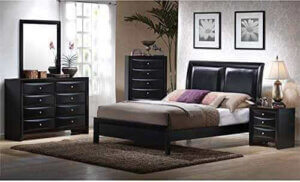
The textures, materials, and colors used to make furniture and other items influence the aesthetics of a space. Therefore, it’s time to learn how to use faux leather in home decor.
When you go to an interior design store, you can see that leather, linen, cotton, and velvet take on great importance and exist in many items. This is due to the relationship between the softness of the texture and the appearance they offer.
However, other alternatives are becoming more popular in homes. The aim is to create attractive new decor concepts. In other words, ideas that stand out from traditional design.
What’s faux leather?
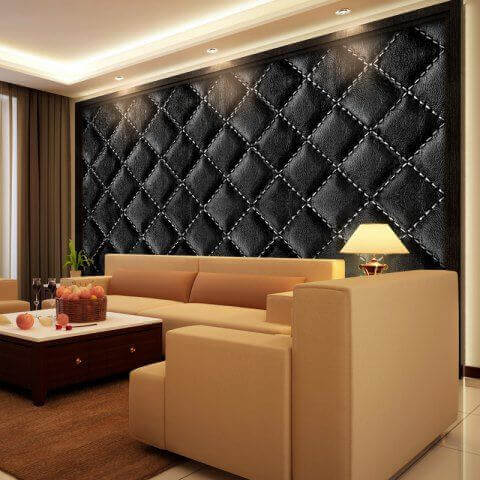
Faux leather (also known as pleather, leatherette, or artificial leather) is a fabric used to upholster furniture: sofas, chairs, armchairs, etc. It’s made of synthetic polyester and is covered by several layers of polymer. The exterior appearance is similar to leather. In fact, it can be difficult to differentiate at first sight.
Its main characteristic is that it’s resistant to the passage of time. In fact, it can withstand continuous use without showing signs of wear. Its elasticity and roughness are remarkable, capable of adapting to the body and weight.
In the fashion world, it’s also very important. Many fashion designers choose this material for clothing because it’s malleable and easy to work with. For this reason, it’s made its way into the decor world and is gaining more and more presence in homes.
A wise choice for both performance and aesthetics.
Four types of faux leather used in home decor
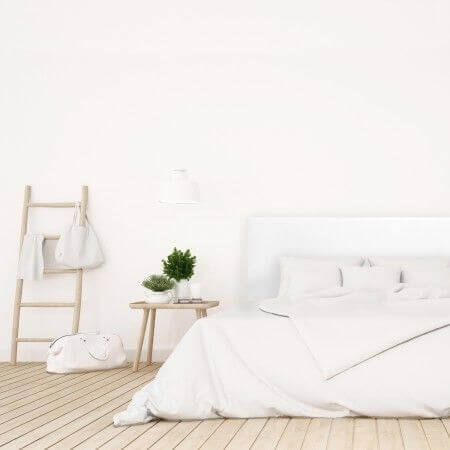
The possibilities are endless, taking into account that there are different types. The elegance it shows and the distinguished character provide a refined style with a certain boldness. We’re going to learn about 4 really interesting kinds of faux leather:
- Sugan faux leather: the most common in decoration. Used on all types of surfaces, such as bean bag chairs. They even make tablecloths with this fabric. It’s characterized by being smooth and soft, thanks to its PVC coating. It doesn’t tear easily, so it’s resistant and comfortable.
- Elis faux leather: perhaps the most similar to real leather. It’s used for all kinds of seats (sofas, armchairs, footrests, chairs…) or to cover the headboard of the bed. It’s considered to be very resistant and smooth to the touch.
- Metallic faux leather: one of the most eye-catching and brilliant. It has a certain brightness and produces light reflections. It isn’t usual to find it in houses. Generally, people use it to upholster furniture they want everyone to notice. The most common color is gold.
- Animal print faux leather: imitation animal skin. For example, zebra or crocodile skin for seats, cushions, carpets, etc.
The color possibilities of faux leather
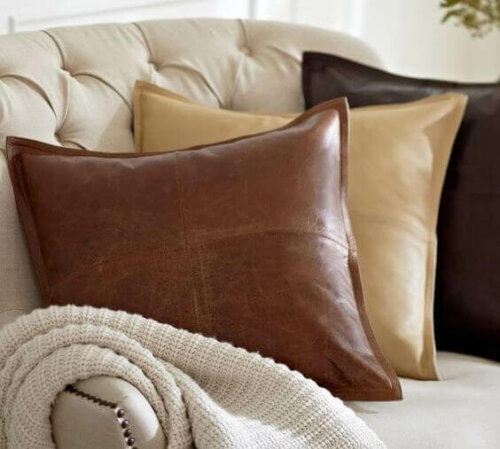
The choice of color is a fundamental principle. When using faux leather in your home, you need to know which one goes best with the rest of the decor. You mustn’t forget it’s an attractive material that attracts attention.
In those rooms where dark or warm tones predominate, you should use beige or ivory cream faux leather. Grays and tans are the most common as they fit perfectly into any space.
On the other hand, if you find yourself in a place where neutral or light colors predominate, you can resort to dark faux leather, such as brown, indigo blue, or, if you wish to be more daring, black.
Easy cleaning
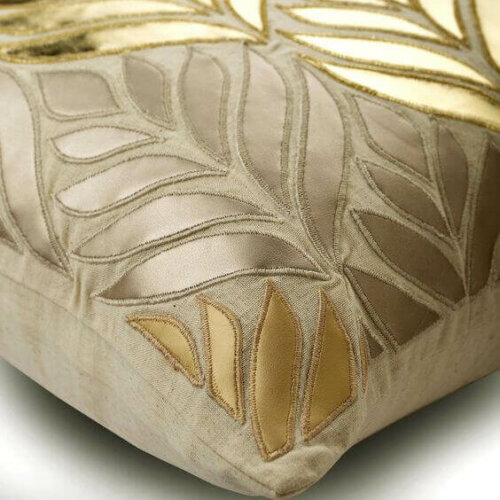
One of the virtues of this material is its easy cleaning. You can do it simply and practically, without damaging the fabric. For this, there are special products but, if you just want to use oxygenated water or water and soap, you won’t have any problems.
Actually, faux leather is functional, not just because of the advantages it offers, but also because it’s comfortable, pleasant, and repels dirt or food and liquid spills.
All cited sources were thoroughly reviewed by our team to ensure their quality, reliability, currency, and validity. The bibliography of this article was considered reliable and of academic or scientific accuracy.
- Ahern, Abigail: Cómo decorar tu piso: trucos para que tu hogar se convierta en la casa de tus sueños, Océano Ambar, 2010.








